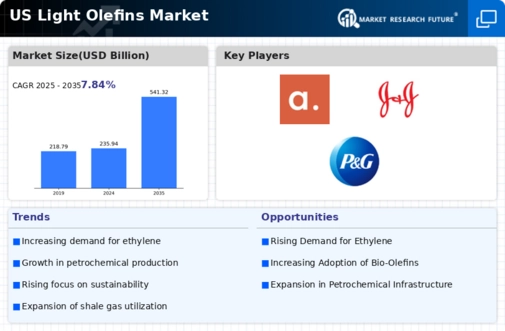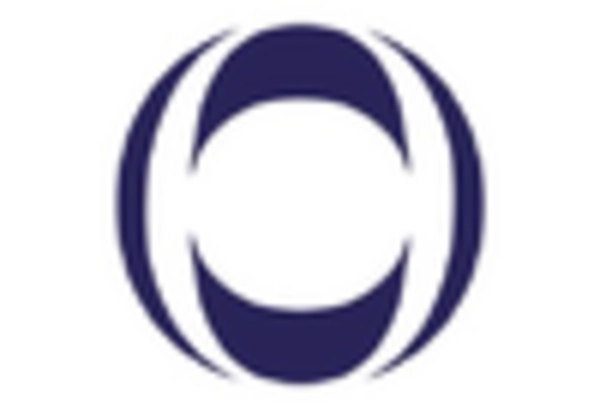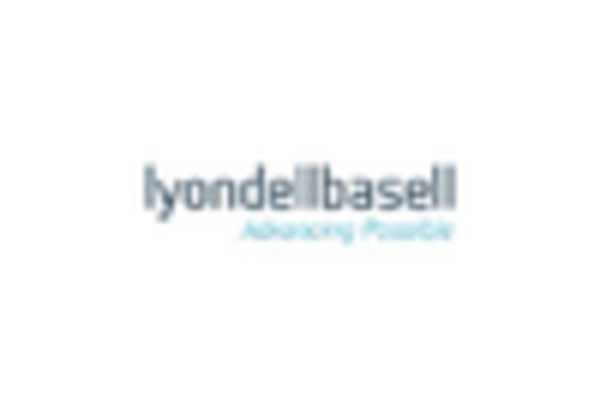Expansion of End-Use Industries
The expansion of end-use industries such as packaging, textiles, and consumer goods is significantly impacting the light olefin market. As these sectors continue to grow, the need for versatile and cost-effective materials derived from light olefins is becoming increasingly apparent. For instance, the packaging industry alone is expected to account for over 25% of the total demand for light olefins by 2025. This trend suggests that the light olefin market will benefit from the ongoing innovations in product development and the increasing focus on lightweight and durable materials, further driving market growth.
Rising Demand for Petrochemicals
The light olefin market is experiencing a notable surge in demand for petrochemicals, driven by their extensive applications in various industries. The growth of the automotive and construction sectors in the US has led to an increased requirement for lightweight materials, which are often derived from light olefins. In 2025, the demand for ethylene, a key light olefin, is projected to reach approximately 30 million metric tons in the US, reflecting a growth rate of around 4% annually. This rising demand is likely to bolster the light olefin market, as manufacturers seek to optimize production processes to meet the evolving needs of these industries.
Investment in Infrastructure Development
Investment in infrastructure development across the US is poised to create substantial opportunities for the light olefin market. The government's commitment to enhancing transportation networks and urban development projects is likely to increase the demand for construction materials that utilize light olefins. In 2025, infrastructure spending is anticipated to exceed $1 trillion, with a significant portion allocated to projects that require materials derived from light olefins. This influx of investment may stimulate growth in the light olefin market, as manufacturers adapt to meet the rising demand for these essential materials.
Growing Focus on Environmental Sustainability
The growing focus on environmental sustainability is influencing the light olefin market in the US. As consumers and businesses increasingly prioritize eco-friendly products, manufacturers are compelled to adopt sustainable practices in their production processes. This shift is leading to the development of bio-based light olefins, which could capture a significant share of the market. By 2025, it is estimated that bio-based light olefins may account for approximately 15% of the total light olefin production, reflecting a broader trend towards sustainability in the industry. This emphasis on environmental responsibility is likely to reshape the competitive landscape of the light olefin market.
Technological Innovations in Production Processes
Technological innovations in production processes are playing a crucial role in shaping the light olefin market. Advances in catalytic processes and polymerization techniques are enabling manufacturers to produce light olefins more efficiently and sustainably. For example, the adoption of advanced cracking technologies has the potential to increase ethylene production yields by up to 10%, thereby enhancing profitability for producers. As these technologies continue to evolve, they are likely to drive down production costs and improve the overall competitiveness of the light olefin market.

















Leave a Comment